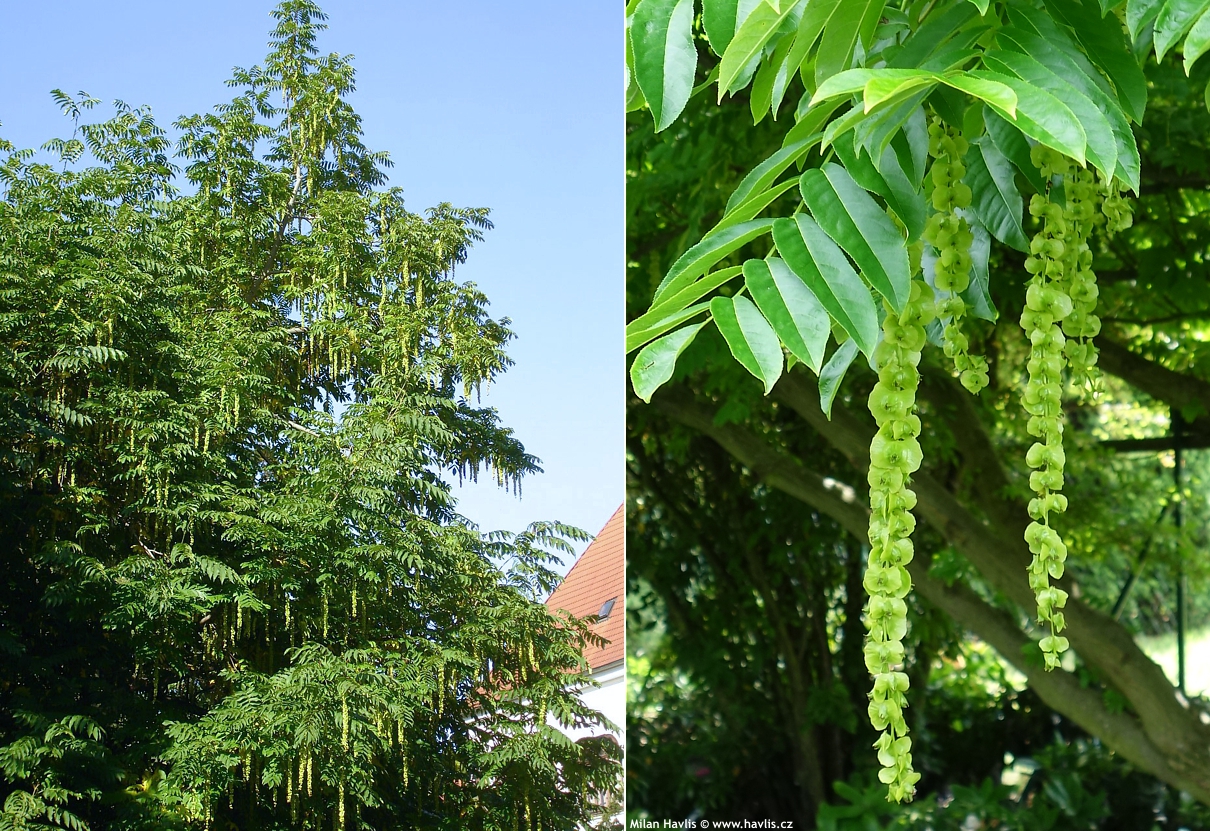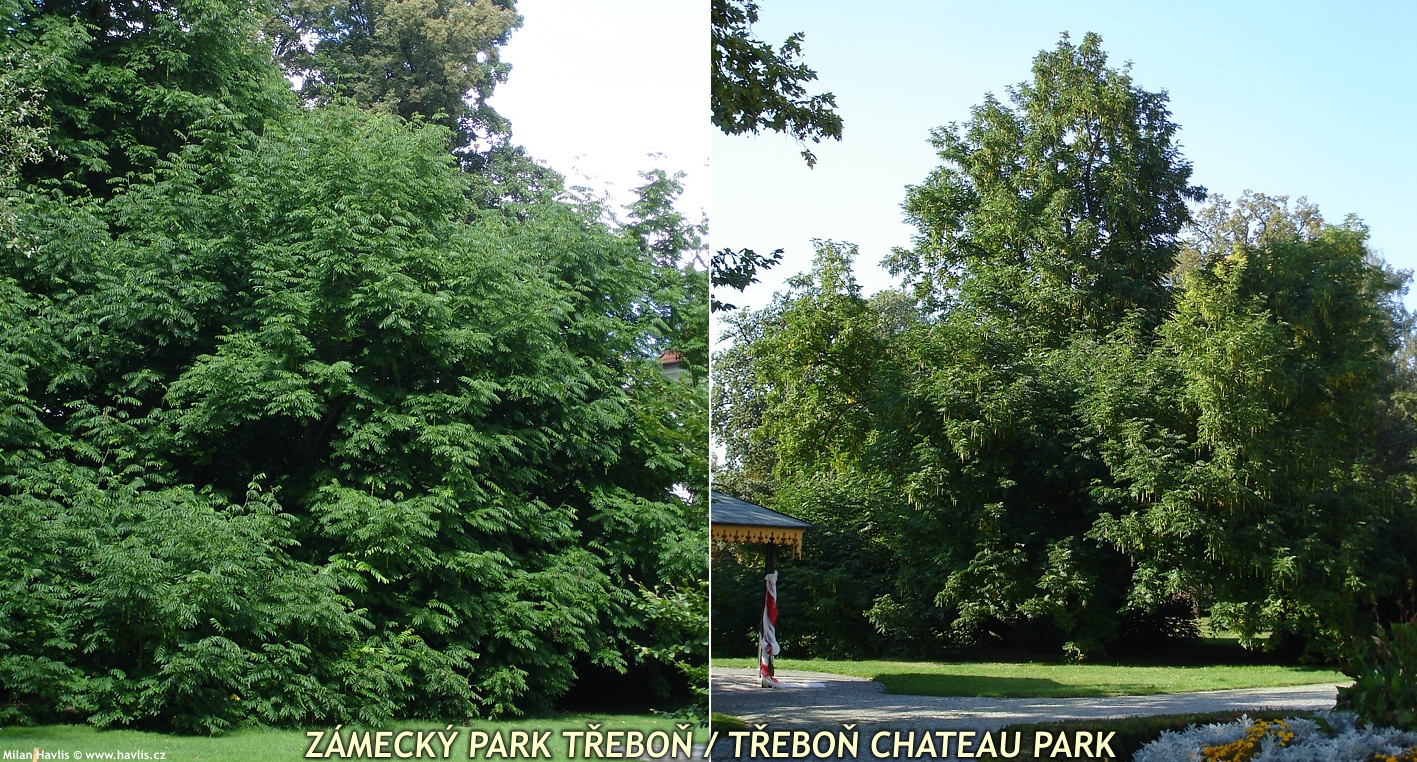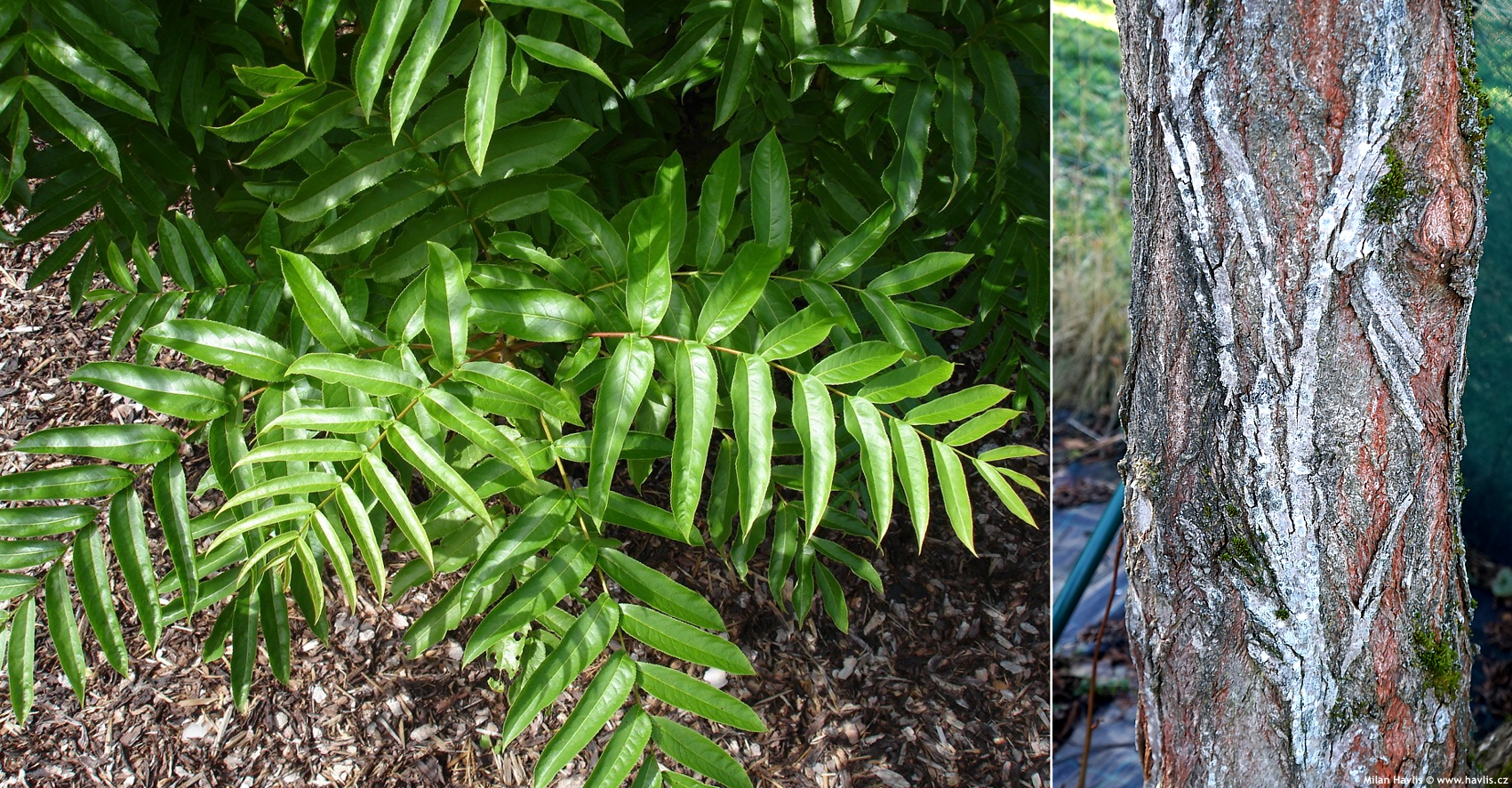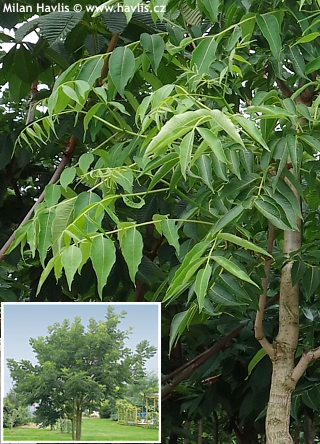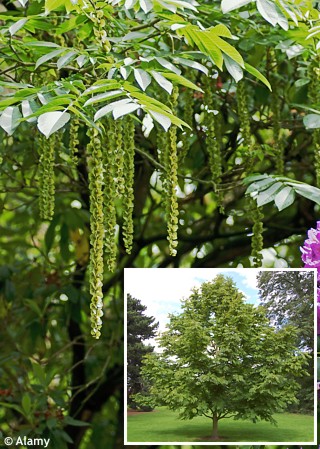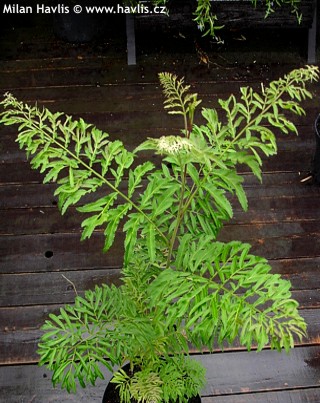Pterocarya fraxinifolia Caucasian wing nut


There is evidence from the Tertiary confirming that wing nuts were frequent trees of the North Hemisphere. To date, only 7 species have been preserved, and one hybrid. The most common species in our country as well as in other parts of Europe comes from the Caucasus and northern Iran. It was first introduced to Europeans in the form of several seeds sent from Persia to England and Germany at the end of the 18th century. Nowadays it is a sought-after tree for large parks, mannors, and arboretums for its attractive leaves, unique inflorescences and majestic habit, which in maturity easily competes with centuries-old cedars of English gardens.
Caucasian wing nut bears deciduous, ash-like, pinnate leaves up to 40 cm long. They consist of 15-25 oblong, pointed and very glossy leaflets. They emerge grass green, turn deep green in summer, and yellow in autumn. In May appear 30-50 cm long, catkin-like, pendent spikes composed of chartreuse, monoecious flowers. At the end of summer and in autumn, they are followed by single-seeded winged nuts. They are not too keen to germinate, however, they require stratification and also pollination by a second tree.
Another feature which requires attention is the bark which is deeply furrowed on older specimens, but even younger trees are decorated with an unusual texture resembling brown tights with a large diamond-shaped grey pattern. Wing nut naturally forms multi-stemmed trees / shrubs, thanks to which it offers a rich and widely distributed dome-shaped crown. Single-stemmed trees are not common (natural), but they are sometimes available in nurseries.
It grows fast and in the open it reaches respectable dimensions almost 20 meters in height and only slightly less in width. Well-established trees tend to produce suckers creating thickets around the motherplant. You are best to remove them to enhance the lower woody framework. It can take any sort of pruning from winter until early spring.
It is not demanding as to the soil type. It likes deep, fertile, and moist soil and location in full sun. Well-established plants tolerate temporary water-logging, and can even be used to drain excess water in places where it can harm other plants because it can drink most of it (just like willows). It has a number of strong and above-ground roots, so it is necessary to plant it at least 5 meters away from buildings and foundations. Fully hardy to min. -29 °C, some sources suggest -34 °C, which I consider trustworthy given the areas of its original occurrence.
Last update: 08-02-2008; 13-01-2012; 08-02-2022
Goods are shipped all over Europe. For Russia and U.K. and for further details please read about SHIPPING OPTIONS HERE.
Are you interested in a serious discount for orders NOV-FEB? Check your options here.
THE PRICES INCLUDE VAT of 15%. For quick conversion you can use 1 CZK = approx. 0.04 EUR
- STANDARD QUALITY - Plants of this group are 1st class quality with number of branches and overall density adequate to their size and age, considering they were container grown.
- DE LUXE QUALITY - This label guarantees a luxurious quality of manually selected plants that, compared to their height and age, are exceptionally dense and beautiful.
- EXTRA - These plants are usually mature and bigger specimens with exceptional overall appearance.
- STANDARD (as described in the plant form) means a tree with a trunk of 190-210 cm and a crown at the top, unless specified differently. The commercial size for trees is their girth measured in the height of 1m from ground.
- HOBBY - These plants are of the same quality as our standard-quality plants but younger and therefore cheaper.
- SHRUB - a woody plant with branches growing bushy from the ground level.
- HALF-STANDARD or MINI-STANDARD - a small tree with shorter trunk, its size is usually specified.
- FEATHERED - These are trees with branches growing already from the base of the trunk and up along the stem.
- GRASSES and PERENNIALS - Sizes given usually read the diameter of the pot or the clump, as specified.













